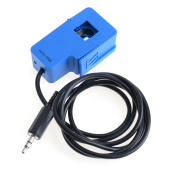arthur_morgan
New Member
Hello DIY Solar Forum members!
I recently embarked on a fascinating journey with solar energy, installing a 10kW grid-tied solar system at my home. It's a big step forward, especially since in my country, any residential grid-tied system over 7kW necessitates a three-phase connection.
My main goal is to get a clearer understanding of the energy flow in my system. I want to monitor:
This is why I'm thinking of a DIY project, perhaps using an Arduino, to bring together these three key metrics in a user-friendly interface. I'm open to any suggestions if you think there's a better way other than Arduino to approach this.
Given that both meters installed by the government are bi-directional (logging power flow both from and to the grid), I'm curious about the best way to integrate and record/log this information in a clear, concise manner.
I'm looking to this community for ideas, advice, and any guidance you can offer on creating a more efficient and accurate system for monitoring my solar energy usage and production.
I have conducted extensive research on the components/sensors needed to achieve my goal. I discovered that non-invasive current sensors (reference image attached below) can be used to log/record electricity transfer or usage. These sensors are placed on the wire to measure the total energy being transmitted through it. The three-phase wire providing grid electricity from the pole is connected to a bidirectional meter (net meter), indicating potential bidirectional electricity flow (from grid to home and solar to grid). My concern is whether these sensors might get confused with the bidirectional flow. What are the optimal locations for placing these sensors?
Thank you for your insights and suggestions!

I recently embarked on a fascinating journey with solar energy, installing a 10kW grid-tied solar system at my home. It's a big step forward, especially since in my country, any residential grid-tied system over 7kW necessitates a three-phase connection.
My main goal is to get a clearer understanding of the energy flow in my system. I want to monitor:
- The total solar energy produced.
- The amount of solar energy I am using.
- The solar energy being exported to the grid.
- Solar Generation Meter: Connected to solar inverter through a three-phase wire, this meter tracks the solar units generated.
- Net Meter: It's linked to:
- The grid's three-phase line.
- A looped cable from the Solar Generation Meter.
- My household load.
This is why I'm thinking of a DIY project, perhaps using an Arduino, to bring together these three key metrics in a user-friendly interface. I'm open to any suggestions if you think there's a better way other than Arduino to approach this.
Given that both meters installed by the government are bi-directional (logging power flow both from and to the grid), I'm curious about the best way to integrate and record/log this information in a clear, concise manner.
I'm looking to this community for ideas, advice, and any guidance you can offer on creating a more efficient and accurate system for monitoring my solar energy usage and production.
I have conducted extensive research on the components/sensors needed to achieve my goal. I discovered that non-invasive current sensors (reference image attached below) can be used to log/record electricity transfer or usage. These sensors are placed on the wire to measure the total energy being transmitted through it. The three-phase wire providing grid electricity from the pole is connected to a bidirectional meter (net meter), indicating potential bidirectional electricity flow (from grid to home and solar to grid). My concern is whether these sensors might get confused with the bidirectional flow. What are the optimal locations for placing these sensors?
Thank you for your insights and suggestions!



